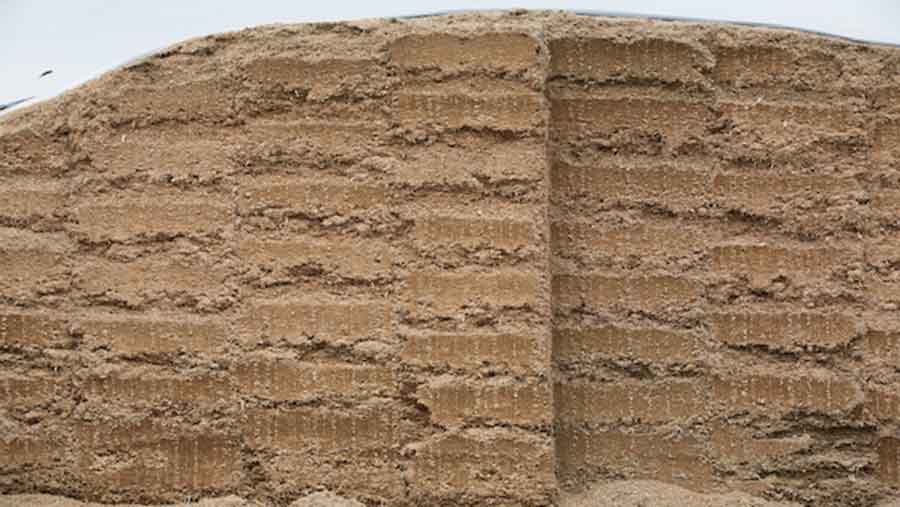Stepped clamp face could alleviate silage slippage
 © Tim Scrivener
© Tim Scrivener Dairy farmers could alleviate silage slippage in the clamp by “stepping” the face of the pit.
Early reports suggest some producers that have tried multicut silage this year have had problems with grass-silage slipping now that it has been clamped.
Andy Gubb, a part-time Kite consultant from Barnacott Farm, Devon, said slippage has been a problem on his family’s 500-cow farm and admitted others were reporting the same issue.
See also: How Danish dairy is hitting 11,000kg at 4% fat
Mr Gubb said the slipping is caused by the physical attributes of the grass, which is relatively low in physical fibre and high in water-soluble carbohydrate because it has been cut more frequently.
“We’ve heard of a higher proportion of clamps slipping compared to normal, but as of yet we don’t know the real reasons why,” he added, emphasising the vast majority of clamps are stable.
Speaking to Farmers Weekly at the Kite Conference in Warrington, Cheshire, this week (9 and 10 October), he suggested that UK clamp design could be a fundamental problem.
Unlike the Danes, who have been practising multicut silage for decades, UK clamps are high rather than wide and low, which doesn’t help to hold wetter silages.
How to alleviate clamp slippage
Kite nutritionist Tim Davies suggested farmers should step the face of the clamp in blocks to reduce immediate problems.
“If you have a clamp that’s slipping now, take the top layer off in steps so you don’t have the weight dragging it down.”
Mr Davies suggested more focus must be placed on good compaction during the clamping phase.
“I don’t think people do a good job of compacting the clamp,” said Mr Davies, who explained that on too many occasions this year when he had been sampling pits, he came across mushy patches that were too easy to penetrate with the corer.
He said next year farmers should ensure they fill clamps in 5-7.5cm layers and have two tractors rolling the pit for sufficient weight.
